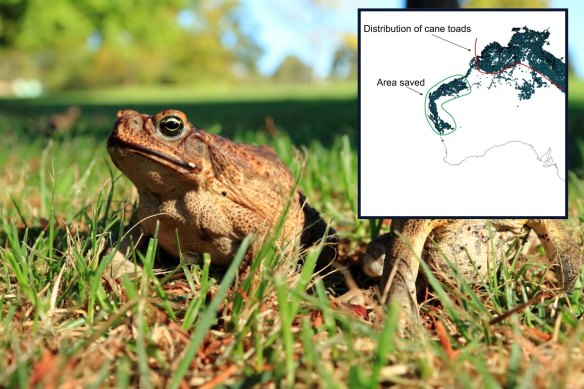
Authorities are establishing a cane toad death corridor on the edge of the Great Sandy Desert in an attempt to stop the toxic pest marching into the Pilbara and wreaking havoc on the environment.
Access to all 150 man-made water points within a ‘toad-break area’ between the Kimberley and Pilbara will be shut off in an effort to prevent the cane toad from migrating south.

Cane toads were first introduced into Australia nearly 100 years ago. Now they’re on the march in WA’s north.
Curtin University science professor Ben Phillips said the hope is the project – run by traditional owners, rangers, pastoralists and scientists – will protect 27 million hectares of sensitive habitat, significant Aboriginal cultural heritage and native wildlife.
“Toads invade by steadily moving across the landscape in the wet season, but they need water points to survive the long, hot dry season. Without access to water, toads in the containment zone will perish, effectively stopping their advance,” he said.
“With cane toads currently less than 150 kilometres from Broome and projected to reach the containment zone by the 2027/28 wet season, the urgency to implement the plan is critical.”
Cane toads were first introduced in Australia in the 1930s.
Invasive Species Council biosecurity analyst Lyall Grieve said so far, efforts to contain cane toads had failed.
“These toxic pests have already spread west throughout the Kimberley and are knocking on the door of the Pilbara,” he said.
“The looming threat of cane toads pushing 20 to 24 more native animals to the brink of extinction if they make their way west of Broome, is a crisis we cannot afford to ignore.”



























